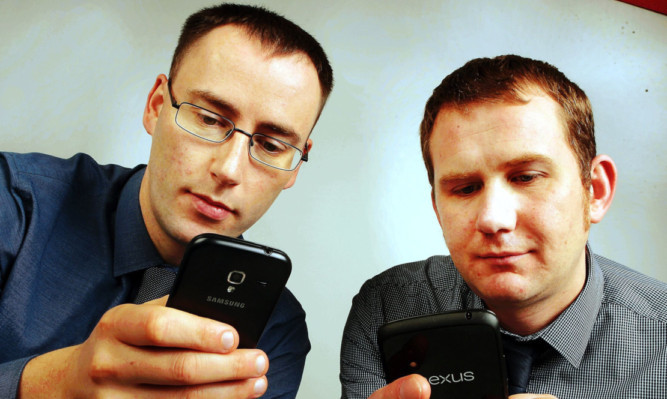A St Andrews University boffin has been tipped as one of the young innovators most likely to “change the world”.
Computer scientist Dr Per Ola Kristensson has risen to prominence through the invention of new ways for people to communicate using the latest technology.
He is one of 35 top young innovators named by the prestigious MIT Technology Review.
For more than a decade, the global media company has compiled a list of exceptionally talented technologists whose work has great potential to “transform the world”.
Dr Kristensson, 34, joins a stellar list of technological talent. Previous winners include Larry Page and Sergey Brin, the co-founders of Google; Mark Zuckerberg, the co-founder of Facebook and Jonathan Ive, the chief designer of Apple.
Among the most recent and best known examples of Dr Kristensson’s work is the invention of a “gesture keyboard” which allows people to rapidly enter text messages on to mobile phones and tablet devices.
Instead of tapping in messages letter by letter, users can simply slide a single finger across the keys of a touchscreen keyboard.
An app allowing users to use such a system in 2008 racked up a million downloads in its first few months.
This year’s 35 young innovators will appear in person at the EmTech MIT conference in Cambridge, Massachusetts, from October 9-11.The Great Text-offWhen I upgraded my phone earlier this year, one of its fancy new features was the ability to “Swype” when texting or composing an email, writes Stefan Morkis.
Instead of punching in each letter individually, the user slides their fingers along an onscreen keyboard to create the word.
I tried it once but decided I got far faster results sticking to the tried and tested methods of jabbing my fingers at the screen.
https://youtube.com/watch?v=O9VXE2owSsw%3Frel%3D0
My colleague Graham Huband, on the other hand, swears by Swype. Confrontation was inevitable.
Each of us had to text the phrase “Did you see that story about texting in The Courier?” as fast as possible.
Like Rocky Balboa squaring up against Apollo Creed, this was to be a clash of the titans albeit a very brief one.
Intimidated by the big occasion or distracted by the dazzling speed of my fingers as I texted Graham froze and I nimbly completed my task within six seconds, around half the time it took him to complete his text.
Perhaps I’ll still learn to Swype though if only to add another texting title to my collection.
